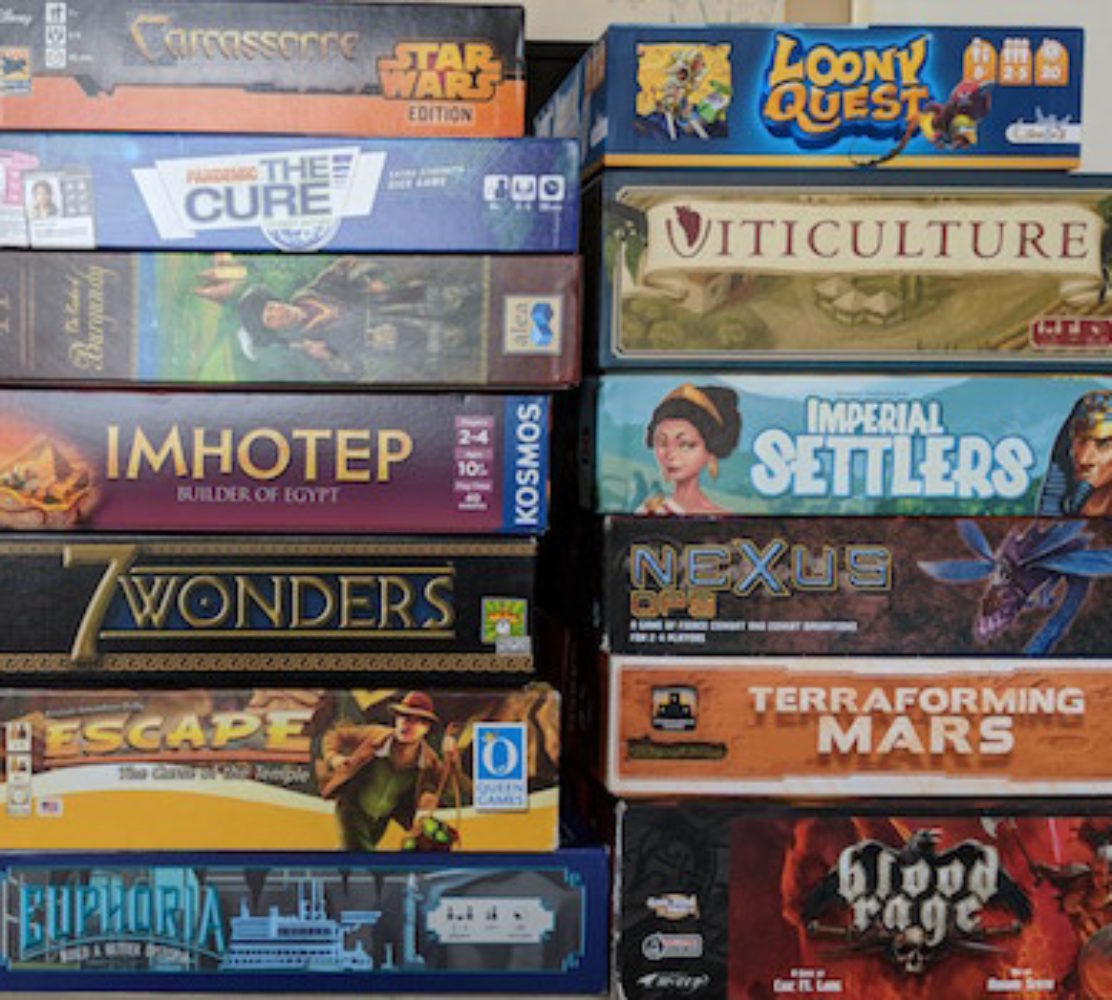Codenames was a welcome gift and nice addition to our games library last year (by the way, I prefer library over collection because when I hear collection, I think of a group of objects displayed for the sake of observing and admiring, whereas a library is something that is actively used. I want our games to be played, borrowed, and played some more. I’m not looking to keep everything in pristine condition and I certainly don’t want our games to be off-limits to the youngest members of our extended family. Okay, rant over). It’s one of the most popular party games ever released, one that gets love from both the hardcore gamers and the casual crowd.
Designer Vlaada Chvatil might not be a household name, but for gamers, he’s a legend. Chvatil has designed some of the most popular and respected titles in the hobby, including Through the Ages: A Story of Civilization, Mage Knight, and more. These are deep and complex titles that gamers love, but Chvatil proved with Codenames that he could appeal to the masses as well.
In Codenames, two teams are trying to uncover their secret agents before their opponents do. A 5×5 grid of cards is set up, with each card containing one word. One member of each team (blue and red) is the spymaster and has access to the key that contains the identities of all the agents, innocent bystanders, and the assassin, on the grid. The spymasters will give clues about who their agents are and the teams will guess which ones are theirs.
Easy, right? Not so fast, Mr. Bond.
The spymaster is only allowed to say exactly one word for a clue and exactly one number that tells the team how many words are related to that clue. For example, the blue team’s spymaster could say, “sport, two.” It’s up to their team to figure out what two words on the 5×5 grid are related to “sport.” The words “ball” and “bat” might be the most likely answers, but what about “plate” or “pitch?” Team members talk amongst themselves while the spymaster remains poker-faced.
When the team guesses, they touch the word on the grid. If it’s correct, the blue spymaster will cover that word with a blue agent card. If it’s incorrect, then they will cover the word with a red agent, an innocent bystander, or worst of all, the assassin. If it’s an opposing team’s agent, then that team now needs one fewer correct guess. If it’s an innocent bystander, no harm done, but it’s the other team’s turn now. If it’s the assassin, though, you lose instantly. Game over. Good night.
It’s easy to get distracted while trying to figure out the perfect clue for your team. There’s also a timer so if you’re taking too long, your opponents can put you on the clock. I prefer playing with the clock, since spymasters can take awhile trying to find that perfect word for their teammates. The game box says the game takes a minimum of 15 minutes, but it could take much longer if the spymasters are too intense. Hence, the clock.
Although I don’t enjoy Codenames as much as others, I usually won’t turn down a match. It’s a treat to play and it’s fun as either the spymaster or as a guesser (field operative).
(By the way, compare the photo below to the one above. Is it just me, or does one of the red team’s agents look like Team U.S.A. goalkeeper Hope Solo?)


